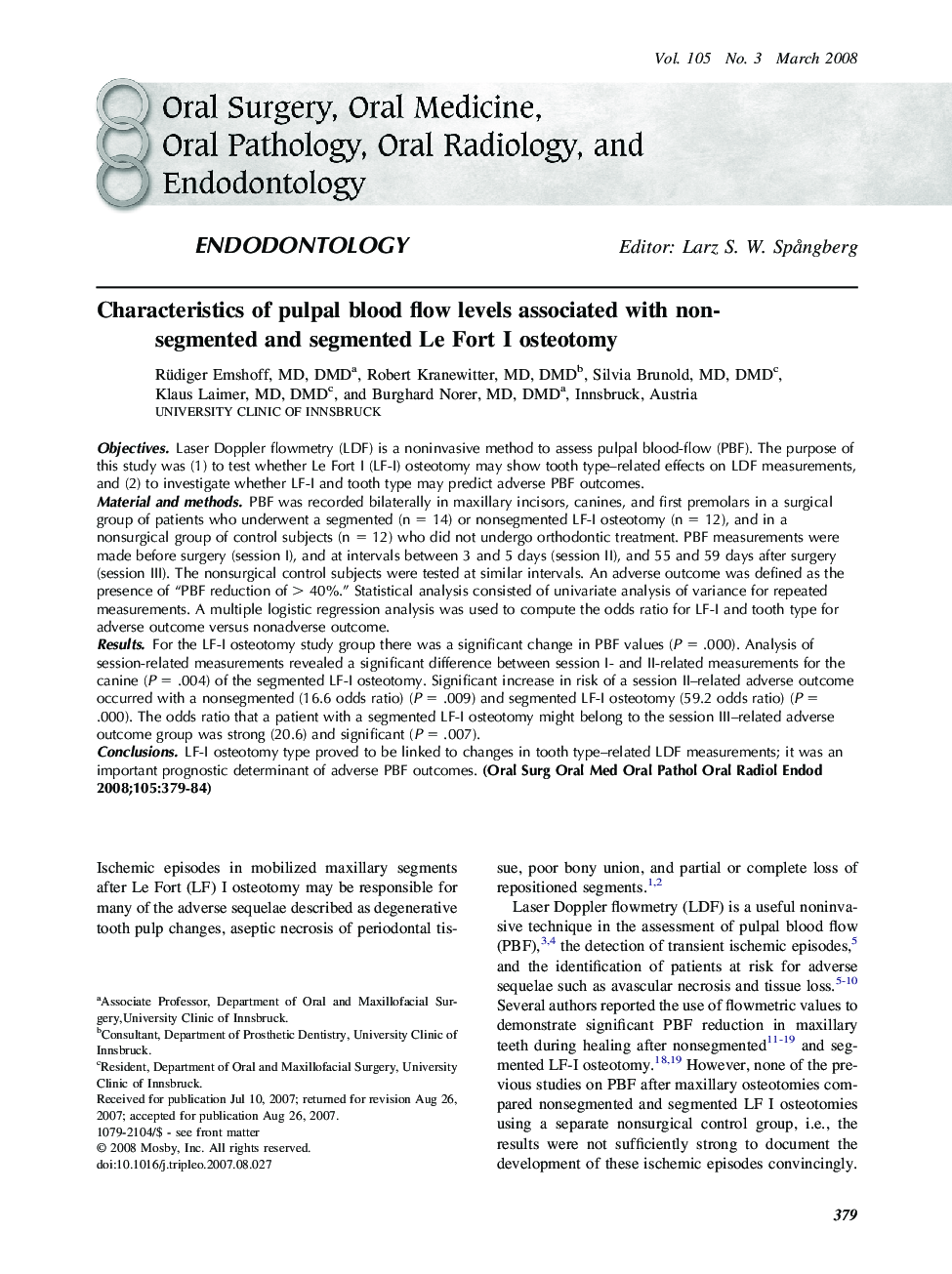| Article ID | Journal | Published Year | Pages | File Type |
|---|---|---|---|---|
| 3169044 | Oral Surgery, Oral Medicine, Oral Pathology, Oral Radiology, and Endodontology | 2008 | 6 Pages |
ObjectivesLaser Doppler flowmetry (LDF) is a noninvasive method to assess pulpal blood-flow (PBF). The purpose of this study was (1) to test whether Le Fort I (LF-I) osteotomy may show tooth type–related effects on LDF measurements, and (2) to investigate whether LF-I and tooth type may predict adverse PBF outcomes.Material and methodsPBF was recorded bilaterally in maxillary incisors, canines, and first premolars in a surgical group of patients who underwent a segmented (n = 14) or nonsegmented LF-I osteotomy (n = 12), and in a nonsurgical group of control subjects (n = 12) who did not undergo orthodontic treatment. PBF measurements were made before surgery (session I), and at intervals between 3 and 5 days (session II), and 55 and 59 days after surgery (session III). The nonsurgical control subjects were tested at similar intervals. An adverse outcome was defined as the presence of “PBF reduction of > 40%.” Statistical analysis consisted of univariate analysis of variance for repeated measurements. A multiple logistic regression analysis was used to compute the odds ratio for LF-I and tooth type for adverse outcome versus nonadverse outcome.ResultsFor the LF-I osteotomy study group there was a significant change in PBF values (P = .000). Analysis of session-related measurements revealed a significant difference between session I- and II-related measurements for the canine (P = .004) of the segmented LF-I osteotomy. Significant increase in risk of a session II–related adverse outcome occurred with a nonsegmented (16.6 odds ratio) (P = .009) and segmented LF-I osteotomy (59.2 odds ratio) (P = .000). The odds ratio that a patient with a segmented LF-I osteotomy might belong to the session III–related adverse outcome group was strong (20.6) and significant (P = .007).ConclusionsLF-I osteotomy type proved to be linked to changes in tooth type–related LDF measurements; it was an important prognostic determinant of adverse PBF outcomes.
